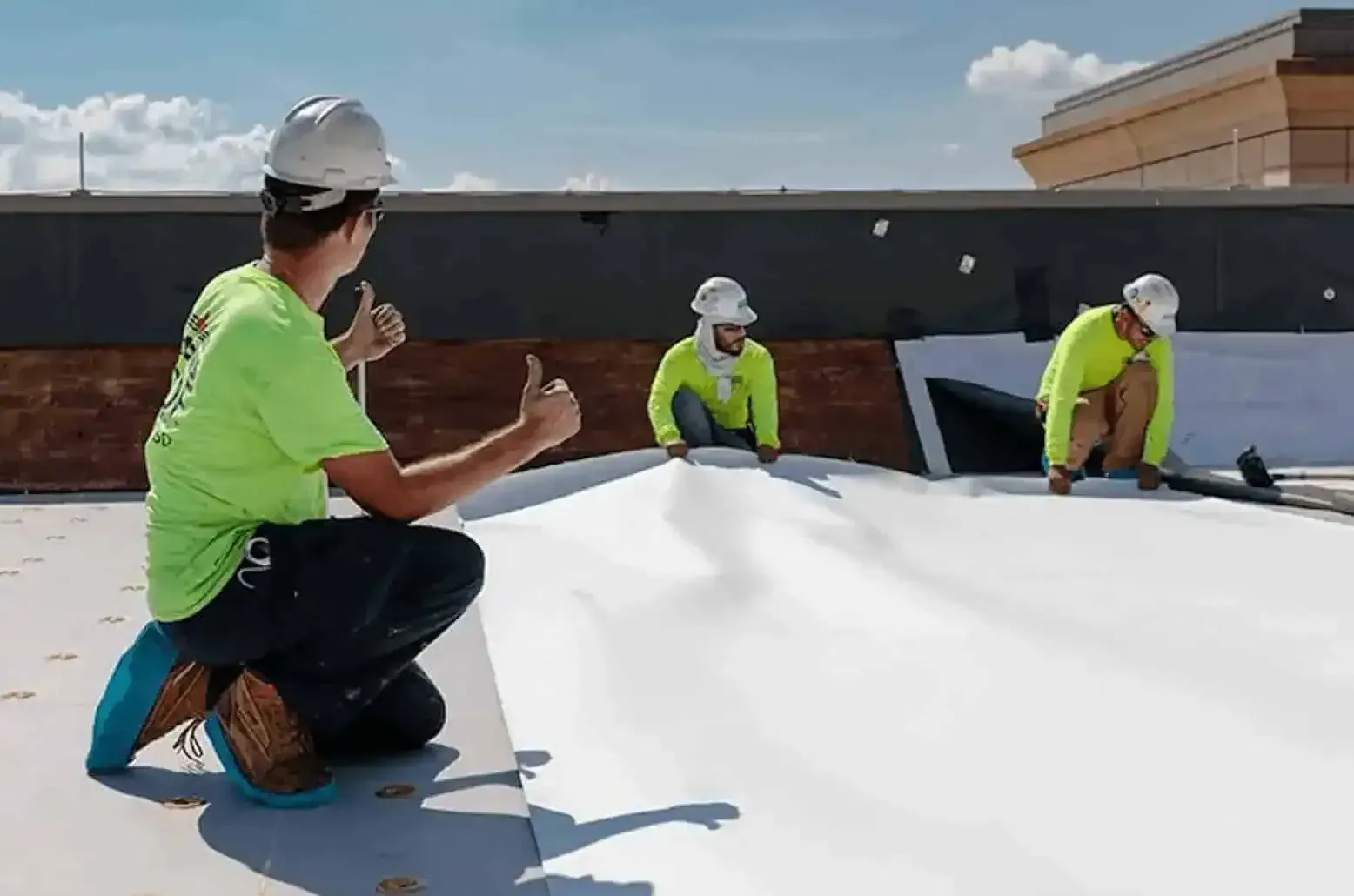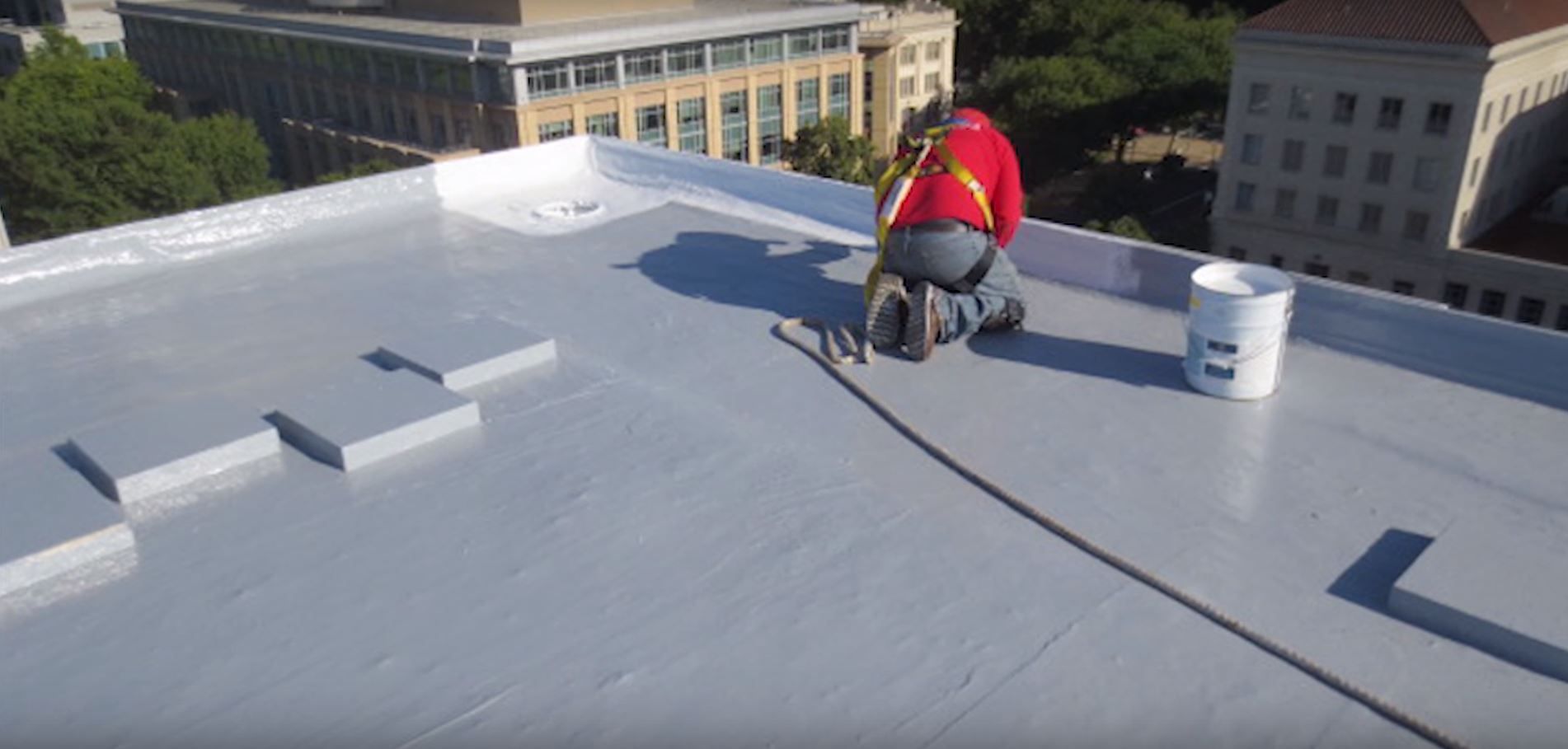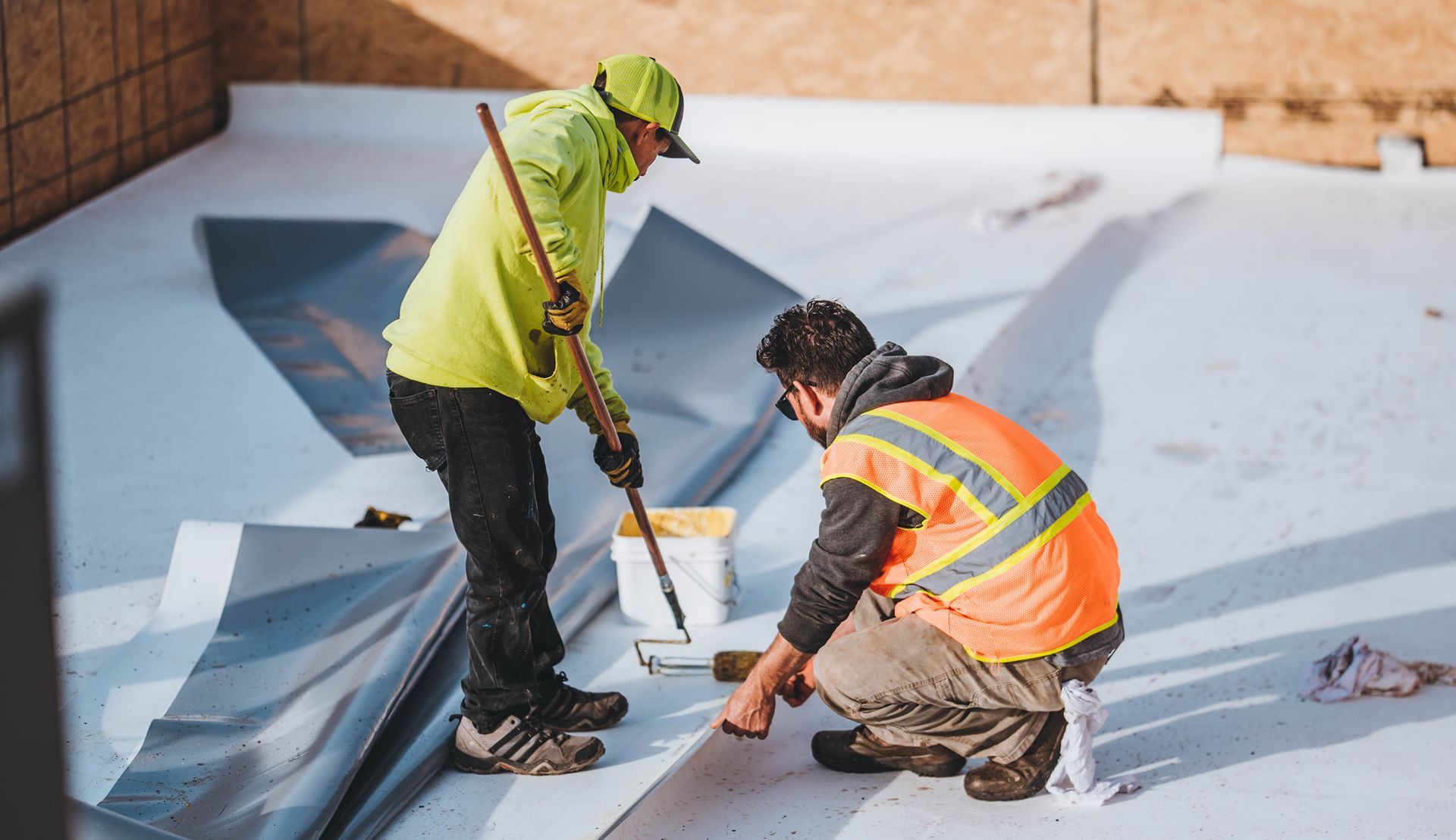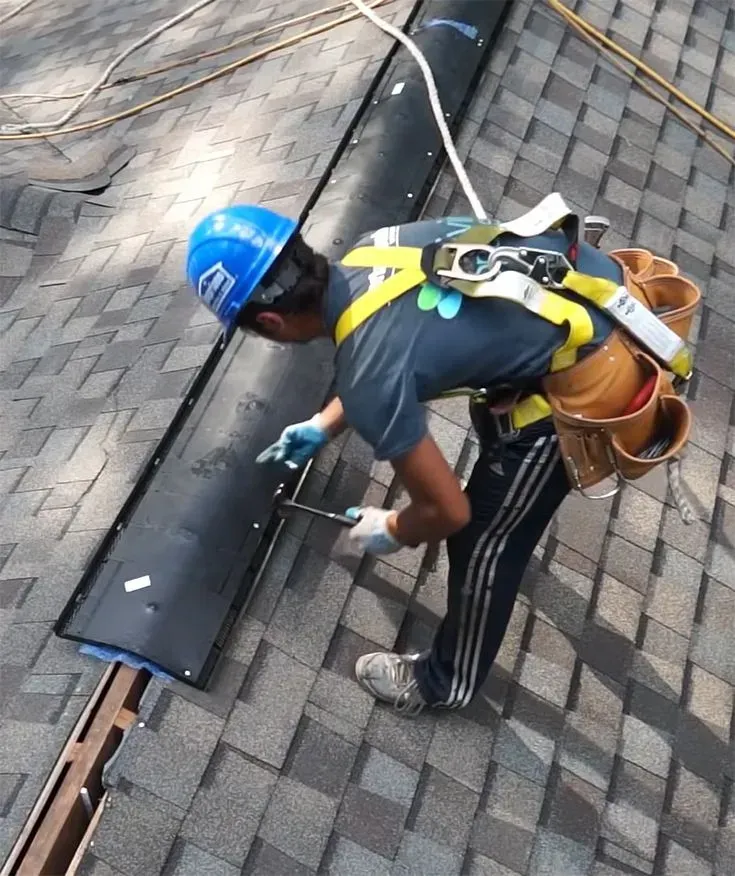TPO Roof Installation
We specialize in high-quality TPO roofing solutions for residential and commercial properties. Our expert team provides professional installation services with industry-leading materials and a focus on durability that can last for decades.
TPO (Thermoplastic Polyolefin) roofing has become popular for flat roofs throughout the DC area due to its energy efficiency and weather resistance. This single-ply roofing membrane reflects UV rays, helping you save on cooling costs during hot DC summers. We've installed hundreds of TPO roofs across the district, delivering excellent results for property owners seeking reliable protection.
Our installation process is thorough and efficient, minimizing disruption to your daily activities. From the initial inspection to the final walkthrough, you can count on our licensed professionals to handle every aspect of your TPO roof installation with precision and care. We proudly stand behind our work with comprehensive warranties and ongoing support.

What Is TPO Roofing?
TPO stands for Thermoplastic Polyolefin, a single-ply roofing membrane that has become increasingly popular for flat roofs in Washington DC. We install this modern roofing solution for both residential and commercial buildings.
TPO roofing is made of a durable polymer that creates a watertight seal over your roof. It comes in large sheets that we heat-weld together during installation, creating strong seams that prevent leaks.
One of the biggest advantages of TPO is its energy efficiency. The white surface reflects heat rather than absorbing it, which can help lower your cooling costs during DC's hot summers.
TPO roofing lasts 25-30 years, outlasting many traditional flat roofing materials. This longer lifespan makes it a cost-effective choice for your property.
Installation Process
This is the text area for this paragraph. To change it, simply click and start typing.
1. Surface Preparation
Before installing a TPO membrane, we thoroughly prepare the roof surface. First, we remove all existing roofing materials, including old shingles, asphalt, or damaged membranes. This gives us a clean slate to work with.
Next, we inspect the underlying deck for structural issues. We repair any damaged sections and ensure the surface is completely flat. Smoothness matters—even small imperfections can damage the TPO membrane over time.
We then install insulation boards to improve energy efficiency. These boards are carefully secured to the deck and create a uniform surface. Finally, we clean the entire area, removing debris and moisture that could interfere with adhesion.
Proper preparation is crucial for a successful TPO installation. We never rush this stage, as it forms the foundation for everything that follows.
2. Membrane Attachment
We offer several methods to attach TPO membranes to your roof, each suited to different building structures and climate conditions.
Mechanically Attached Systems use special fasteners to secure the membrane to the roof deck. This method is cost-effective and works well in most conditions. We space the fasteners according to manufacturer specifications and wind uplift requirements.
Fully Adhered Systems use adhesive to bond the entire membrane to the substrate. This creates a smooth appearance and excellent wind resistance. We carefully apply the adhesive and roll the membrane into place to prevent air pockets.
Ballasted Systems use gravel or pavers to hold the membrane in place. This option is economical but requires a roof structure that can support the extra weight.
We'll recommend the best attachment method for your specific building after our initial assessment.
3. Seam Welding
TPO seams must be properly welded to create a watertight barrier. We use hot-air welding technology to fuse the membrane sections together at a molecular level.
Our technicians operate specialized hot-air welding machines that heat the overlapping membrane edges to the precise temperature needed for perfect fusion. These machines create consistent, reliable seams that are actually stronger than the membrane itself.
For hard-to-reach areas, we use handheld welders with specific settings for TPO material. Each seam is tested using a probe to verify complete bonding and watertight integrity.
We also perform pull tests on sample welds at the beginning of each day to ensure optimal welding parameters. This attention to detail prevents future leaks at seam locations—a common failure point in poorly installed roofing systems.
4. Flashing and Detail Work
Proper flashing is critical to prevent water infiltration at roof penetrations and transitions. We install pre-molded TPO flashing at all roof penetrations, including vents, pipes, and HVAC units.
For roof edges, we secure TPO-coated metal flashing that creates a seamless transition. This edge detail prevents wind uplift and water intrusion at the roof perimeter.
At wall transitions, we carefully extend the membrane up the vertical surface and secure it with termination bars. We then seal the top edge with appropriate caulking to prevent water from migrating behind the membrane.
Our detail work includes creating proper drainage paths toward roof drains and scuppers. We ensure positive drainage by adjusting insulation thickness where needed, eliminating potential water pooling areas.
These details may seem small, but they make the difference between a leaky roof and one that performs flawlessly for decades.
5. Inspection and Quality Assurance
We conduct thorough post-installation inspections to verify that your TPO roof meets our high standards. Our team checks all seams, flashings, and edges to ensure watertight integrity across the entire surface.
Documentation is an important part of our process. You'll receive detailed reports of our findings along with photos of the completed work. This documentation helps with warranty claims if needed in the future.
We also perform drainage tests to confirm proper water runoff and prevent ponding issues. Many roofing problems stem from standing water, so we take this step seriously.
Our quality assurance doesn't end after installation day. We schedule a follow-up inspection 30-60 days after completion to address any settling or minor adjustments needed.
Benefits of TPO Roofing
Energy Efficiency Advantage
TPO roofing systems excel at reflecting UV rays and heat from the sun. This reflective property can significantly reduce your cooling costs by up to 30% in some cases.
The white surface of TPO membranes reflects about 85-90% of solar radiation instead of absorbing it. This reflection maintain consistent indoor temperatures without overworking your HVAC system.
TPO is also recognized by Energy Star and can help buildings qualify for LEED certification. We've seen many of our Washington DC clients notice immediate differences in their energy bills after installation.


Durability and Longevity
TPO roofing stands up remarkably well to Washington DC's varied climate conditions. These membranes resist dirt, algae, and bacteria growth that could otherwise compromise roof integrity.
The material handles thermal expansion and contraction without cracking or splitting. This flexibility is crucial during DC's temperature fluctuations between seasons.
With proper installation and maintenance, TPO roofs last 15-25 years. The heat-welded seams create a watertight bond that's stronger than the membrane itself, preventing leaks and water damage.
Ease of Installation
We can install TPO roofing more quickly than many traditional systems, minimizing disruption to your business or home. The lightweight nature of TPO membrane makes it easier to handle and position correctly.
TPO comes in wider sheets (up to 12 feet wide), which means fewer seams and faster installation times. Fewer seams also translates to fewer potential failure points in your roofing system.
The material can be mechanically fastened, fully adhered, or ballasted depending on your specific building needs. This flexibility allows us to choose the best installation method for your situation.


Environmental Impact
TPO roofing is an environmentally conscious choice for your building. The material contains no chlorine or plasticizers that could harm the environment, unlike some other roofing options.
At the end of its lifespan, TPO material are recycled rather than sent to landfills. We prioritize sustainable disposal methods.
The energy efficiency of TPO also means reduced carbon emissions from your building. By lowering the energy needed for cooling, you're decreasing your carbon footprint.
TPO installation requires less material than built-up roof systems, reducing waste during the installation process. This efficiency aligns with green building practices that are becoming increasingly important in Washington DC.
How Do Ridge Vents Work?
Ridge vents help release heat and moisture from the attic. They sit at the peak of a sloped roof.
Warm air rises and escapes through these vents. This process helps keep the attic cool and dry.
Key Functions of Ridge Vents:
- Ventilation: Allows hot air to exit.
- Moisture Control: Reduces humidity, preventing mold.
- Energy Efficiency: Lowers cooling costs by stabilizing temperatures.
Ridge vents work best when combined with soffit vents. Soffit vents are located at the roof's lower edge. This combination creates a continuous airflow.
The airflow works like this:
- Intake: Cool air enters through soffit vents.
- Movement: Cooler air pushes warm air up.
- Exhaust: Warm air exits through ridge vents.
Proper installation is crucial. Misalignment can block airflow, reducing effectiveness. We recommend professional installation for the best results.
Regular maintenance is also essential. You should check for debris or damage. Keeping vents clear ensures they work well over time.
FAQs
TPO roofing installations come with many common questions from our customers. We've gathered the most important information about costs, durability, brands, and maintenance to help you make informed decisions.
What are the factors influencing the cost of a TPO roof installation?
Several key elements affect TPO roofing costs. The size of your roof is the primary factor, as larger areas require more materials and labor.
The thickness of the TPO membrane impacts pricing significantly. We offer options ranging from 45 mil to 80 mil thickness, with thicker membranes costing more but providing enhanced durability.
Your roof's complexity matters too. Buildings with multiple penetrations, HVAC units, or unusual shapes require more detail work and flashing.
Accessibility affects labor costs. If your roof is difficult to reach or requires special equipment, this will increase the installation price.
How long does a TPO roof typically last under normal weather conditions?
TPO roofs installed by Washington DC Roofing Company typically last 20-30 years with proper maintenance. This lifespan depends on several factors including membrane thickness and local climate conditions.
The quality of installation significantly impacts longevity. Our certified installation team ensures all seams are properly welded and details are correctly finished.
Modern TPO formulations have improved UV and heat resistance compared to earlier generations. This enhancement helps maintain reflectivity and structural integrity over time.
Regular inspections can help identify and address small issues before they compromise the roof's lifespan.
Which TPO roofing brand shows the highest performance and reliability?
We primarily install GAF and Firestone TPO systems due to their consistent performance records and extensive warranties. These manufacturers have refined their formulations over decades.
GAF EverGuard TPO offers excellent heat and UV resistance with their advanced material science. Their products perform exceptionally well in Washington DC's varying climate conditions.
Firestone UltraPly TPO provides superior puncture resistance and flexibility, maintaining performance through seasonal temperature changes. Their seam strength is among the industry's best.
Both brands offer comprehensive warranty options that can extend up to 30 years when installed by certified contractors like us.
Are there any notable drawbacks when using TPO roofing for commercial buildings?
Installation quality is critical with TPO systems. Poorly welded seams can lead to leaks and premature failure, which is why we invest in ongoing training for our installation teams.
Some older TPO formulations had issues with premature aging and cracking. Today's improved materials have largely resolved these concerns, but choosing a quality manufacturer remains important.
TPO can be punctured by sharp objects, making regular roof inspections necessary. We recommend establishing maintenance protocols after installation.
While highly energy efficient, TPO's initial cost may be higher than some traditional roofing systems, though this is typically offset by energy savings over time.
Can a TPO roof be installed over an existing roofing system, and what are the considerations?
Yes, in many cases we can install TPO over existing roofing, potentially saving on removal costs and reducing landfill waste. This approach is called a "recover" installation.
The existing roof must be structurally sound and relatively dry. We conduct moisture scanning to detect any trapped water that could compromise the new system.
Building codes typically limit commercial buildings to two roof layers. We'll verify local regulations and assess your current roofing situation during consultation.
Proper preparation may include adding recovery board insulation to create a smooth, compatible surface for the new TPO membrane attachment.
Tell Us About Your Roofing Project
Contact Us
Our Newsletter
We will get back to you as soon as possible.
Please try again later.
Subscribe For Newsletter
All Rights Reserved | Washington DC Roofing Company
